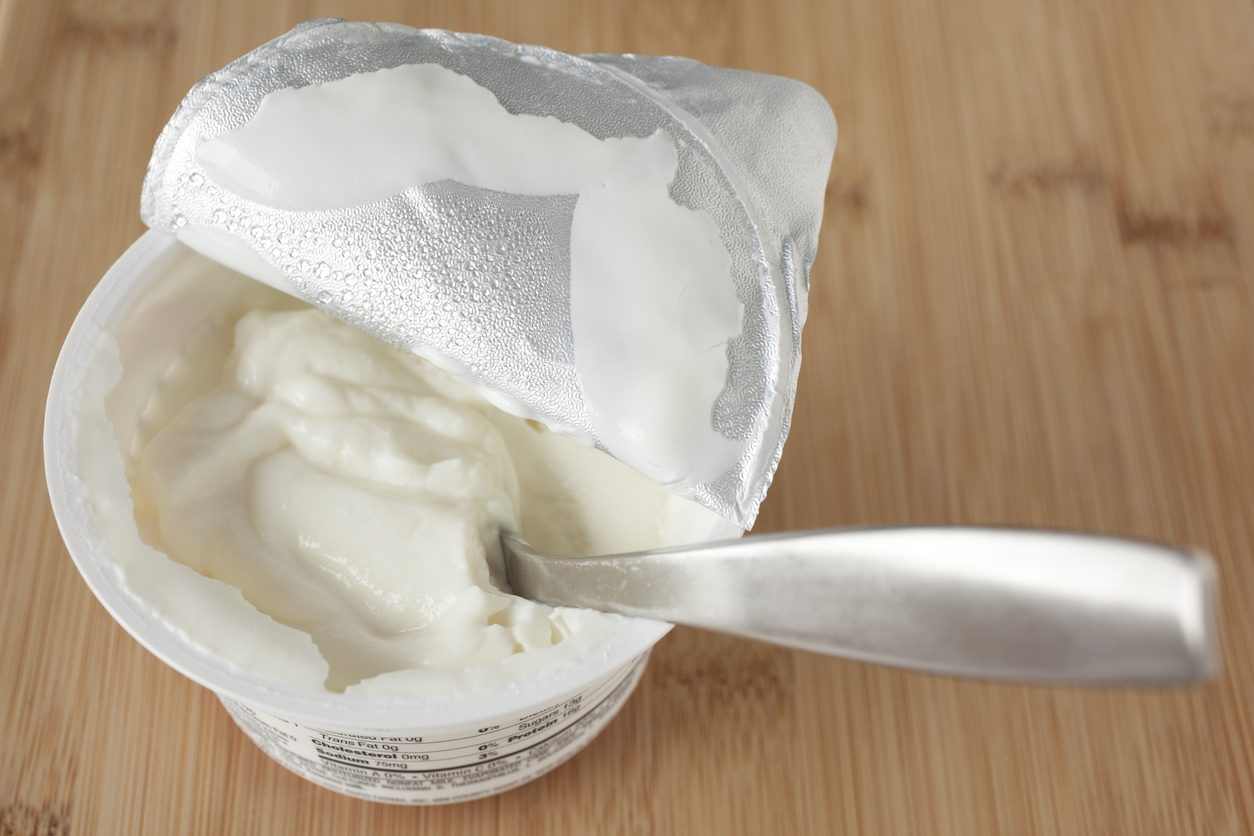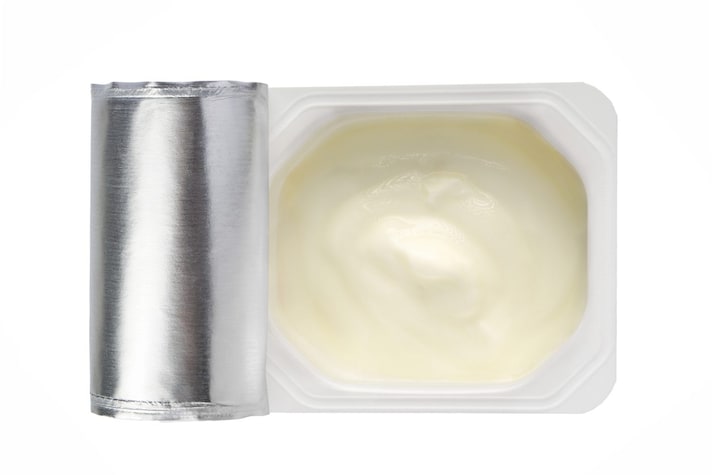Here’s Why Greek Yogurt Is Sometimes Covered With Paper
That damp, soggy circle of paper perched atop your favorite tub of Greek yogurt might seem insignificant, but it actually serves a vital purpose. Acting as a protective barrier, it helps maintain the yogurt's freshness and quality. Here’s everything we know.
;)
Greek yogurt has become increasingly popular due to its tangy taste, creamy texture, and high protein content, surpassing traditional options in popularity. If you're a frequent consumer, you've likely encountered the perplexing paper covering and wondered about its significance. You're not alone in this curiosity, and now, we have the answers.
What Is The Film On Top Of Greek Yogurt?

That film is nothing harmful. It is just whey, a natural by-product of the yogurt-making process. Whey contains proteins, vitamins, and minerals, adding to the nutritional value of the yogurt. You can mix it in if you like a less concentrated yogurt or pour it off if you prefer your yogurt to have a thicker consistency. Either way, it's entirely safe to consume and can even enhance the taste and texture of your yogurt experience.
Why the Paper Covering on Greek Yogurt?
The paper covering isn't just any paper—it's there to address a common issue: liquid whey separation. Whey, a natural by-product of yogurt production, contains proteins, vitamins, and minerals that contribute to the yogurt's nutritional value. While some opt to mix the whey into their yogurt for a less concentrated texture, others prefer to pour it off to achieve a thicker consistency. However, dealing with the whey can be tricky, as it tends to be acidic and can alter the yogurt's flavor and texture. To mitigate this issue, some brands include a paper layer to absorb excess whey, ensuring that consumers enjoy the yogurt as intended without the hassle of managing the whey themselves.

Why Isn't Paper Found on All Yogurts?
Not all brands prioritize addressing whey separation, considering it a natural part of the yogurt-making process. Some brands utilize stabilizing ingredients like emulsifiers, gelling agents, and gums to prevent whey separation altogether. However, while these additives prevent separation, they can also impact the yogurt's flavor and texture. Brands that focus on minimal ingredients or market themselves as "natural" typically avoid these stabilizers, resulting in whey accumulation on the yogurt's surface if not accompanied by the paper covering.

Summary
The paper covering on Greek yogurt serves a singular purpose—to absorb excess whey and maintain the yogurt's desired consistency. Its presence allows you to enjoy your yogurt hassle-free, without worrying about managing the whey yourself. Whether the paper is present or absent, you now understand its role in preserving the quality of your yogurt.
;Resize,width=767;)
;Resize,width=712;)
;Resize,width=712;)
;Resize,width=712;)
